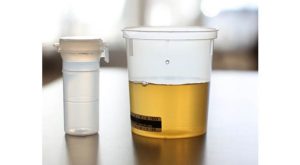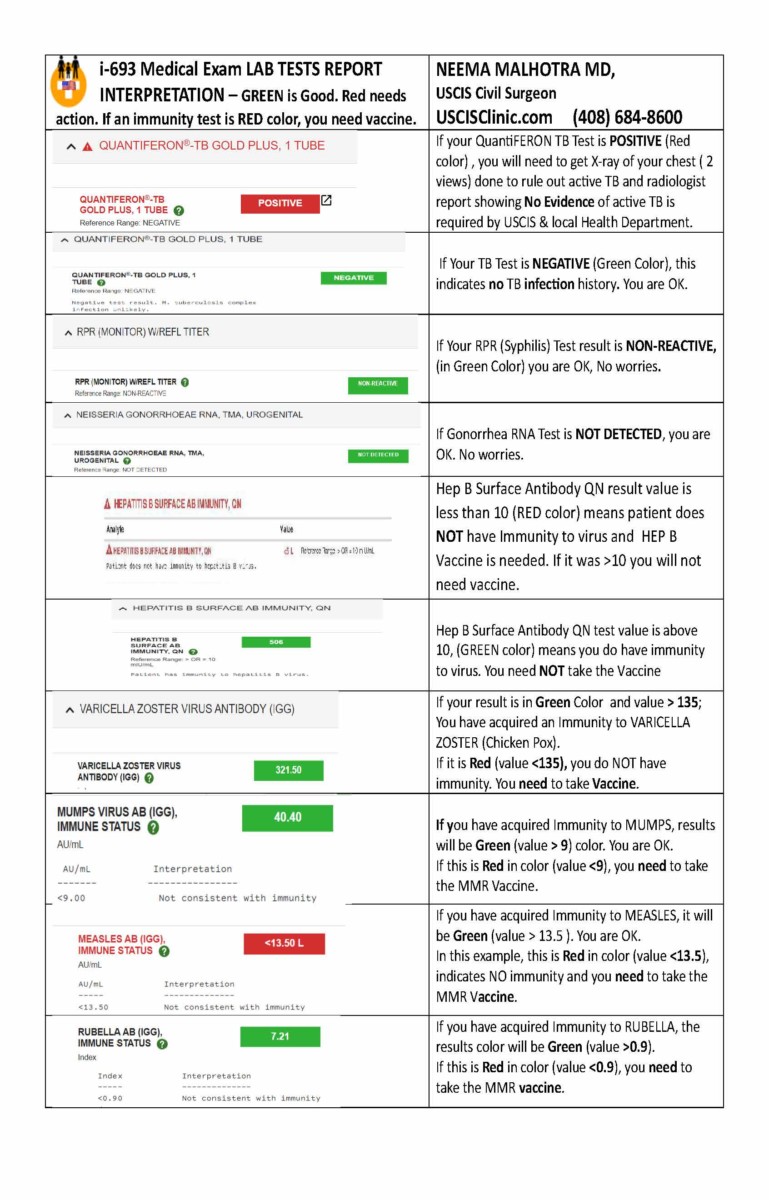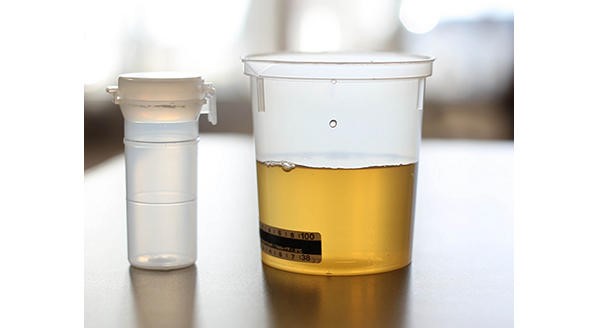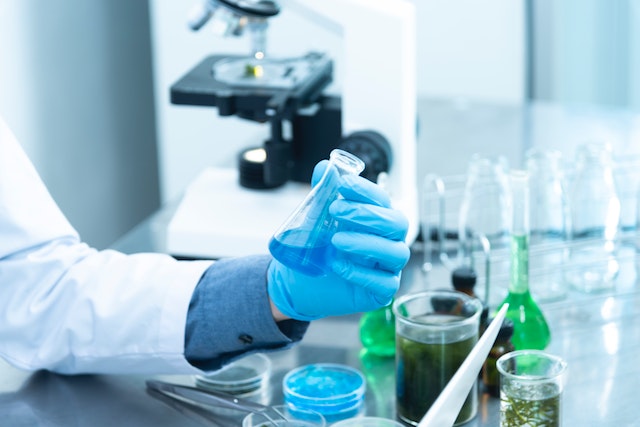Lab Test Panels for Immigration, and Drug Screening & Testing for DOT (Department of Transportation), Pre-Employment can be ordered at our USCIS Clinic as part of your medical exam and certification. There are specific requirements for these panels which are described below. We offer very cost-effective lab tests and expedient service. Same-day or next-day appointments are usually available.
Lab Test Panels for Immigration Medical Exam

USCIS Lab Requirements
- Quantiferon (Tuberculosis) Blood Test for all ages 2 years & up.
- Syphilis Blood Test after age 18 to 45.
- Gonorrhea Urine Test between age 18 to 24.
What is Quantiferon (Tuberculosis) TB Test (QFT)
Quantiferon QFT lab blood test can aid in the diagnosis of both active TB disease and LTBI. It applies to all patient groups that would be candidates for the traditional tuberculin skin test, but has several significant benefits, including:
- Accuracy: QFT lab test is a blood test that assesses the production of gamma interferon by a type of white blood cell, and is a sensitive test for exposure to TB. A positive result means that the patient has been exposed to the M. tuberculosis bacterium, which may be either latent (asymptomatic) or active. Most results of the test (>95%) result in either a positive or negative result, and are not affected by compromised immunity, such as that seen in HIV patients.
- Convenience: A QFT lab test can generate the desired disease information after a single patient visit, whereas a TB skin test must be evaluated by a clinician in a subsequent visit days later.
- Reliability: The TB skin test requires an intradermal injection, which is subject to health provider error in administration. It also requires a second visit to the health care provider after 2-3 days to interpret the test. False positives with the skin test may occur in the setting of vaccination/administration, and false negatives may occur in immunocompromised patients. No fasting is needed.
- Many people born outside of the United States have been given a vaccine called BCG.People who were previously vaccinated with BCG may receive a TB skin test to test for TB infection. Vaccination with BCG may cause a false positive reaction to a TB skin test. A positive reaction to a TB skin test may be due to the BCG vaccine itself or due to infection with TB bacteria.TB blood tests (IGRAs), unlike the TB skin test, are not affected by prior BCG vaccination and are not expected to give a false-positive result in people who have received BCG. TB blood tests are the preferred method of TB testing for people who have received the BCG vaccine.
Who Should Do TB Test?
To reduce disparities related to TB, screening, prevention, and control efforts should be targeted to the populations at greatest risk, including:
- Green Card Applicants for Immigration Medical Exam (I-693)
- Healthcare workers
- Military personnel
- The Elderly
- Students
- Immigrants
- International travelers
- Residents of long-term care facilities
- People with weakened immune systems
- Persons living in correctional facilities or other congregate settings
- Close contact with persons known or suspected to have Active TB
About Tuberculosis (TB) Blood Test
Tuberculosis (TB) is an infectious disease caused by germs that are spread from person to person through the air. It usually affects the lungs, but sometimes also affects other parts of the body such as the brain, the kidneys, or the spine. A person with TB can die from it if it is left untreated. Usually, when people are sick from active TB germs, the germs multiply and destroy tissue in the body. They normally experience symptoms. TB disease is contagious if it’s in the lungs or throat (which it usually is). When these results are taken to a doctor, they will be prescribed treatment to cure TB.
What are the symptoms of Tuberculosis?
The following are some symptoms of TB disease, other potential symptoms depend on the body parts affected by the disease:
- Sickness
- Weakness
- Unintentional Weight Loss
- Night Sweats
- Fever
- Chest pain
- Coughing
- Coughing up blood
Is Tuberculosis contagious?
Yes, it is. When a person with Tuberculosis disease of the lungs or throat coughs, sneezes, sings, or even just speaks it puts out the TB germs into the air and risks other people around them.
These germs can stay in the air for several hours, but it all depends on the environment.
When people become infected by breathing the air containing the germs it is called “latent Tuberculosis infection.”
Tuberculosis has to be reported to the county Health department, which is responsible to ensuring that the disease does not spread.
What TB test do we use?
There are two approved tests in the USA by the FDA.
One is the QuantiFERON - TB Gold In-Tube test (QFT-GIT), and the other is the T-spot TB test. We use the QFT-GIT test.
When you go into one of our recommended labs for testing, a technician will gather blood using a needle. From there, the blood is sent to a laboratory. Once there, the lab runs a test on the blood to see how the immune system reacts to the germs that cause TB.
What do the results of a Tuberculosis test mean?
A positive TB blood test means the person is infected with TB bacteria. A doctor will need to do additional tests to determine if it is a latent TB infection or TB disease.
A negative TB blood test means the blood did not react to the test and that latent TB and TB disease are not likely.
What is latent TB infection?
When people have Tuberculosis germs in their bodies but are not experiencing symptoms, it is often because the germs in their system are not active. Latent TB infection is not contagious, however, it can still develop into TB disease eventually. Because of this, treatment is often still done to prevent developing TB disease.
What do I do if I spent time with someone with a Tuberculosis Infection?
TB disease is most likely to spread to people who hang around the person infected a lot like family members or close friends. If you have been around someone who has TB disease, you should go to your doctor or your local health department to get tested.
Are there treatments for Tuberculosis available?
For people sick with TB disease, the treatment is usually several drugs for about 2 to 12 months. It is a treatment that must be followed carefully because if they stop taking the drugs too soon, the disease can pick up again. If they do not take the drugs correctly, the remaining germs may become resistant to the drugs and will become more difficult and expensive to cure.
It can be so difficult that at times the staff of their health department will meet regularly with patients who have TB to watch them take their medications. This form of treatment is called “directly observed therapy” (DOT). DOT helps complete treatment with the patient in the most efficient amount of time.
How long should I wait before getting tested for TB?
There is no incubation period for Tuberculosis when using a blood test, so you don't have to wait before getting tested using our QF TB blood test method of testing. Please note that TB can take several weeks before creating a reaction to the skin test, however using a blood test, there is no incubation period. QF TB Blood test takes about 2-3 days.
Want to become a TB expert? > Read this USCIS TB Technical Manual for Civil Surgeons
About Syphilis, RPR Test
Syphilis is a common sexually transmitted infection (STI) caused by the bacteria T. Pallidum (Treponema pallidum). The disease can be cured with antibiotics if identified during the first two stages of syphilis, and it can become increasingly difficult to cure in its late stages.
We use a Rapid Plasma Reagin (RPR) test to screen for syphilis. The RPR test searches for antibodies to the substances given off by cells when a syphilis infection damages them. The presence of these antibodies indicates if you have a syphilis infection or not. We not only look for the presence of these antibodies, but we provide you with the concentrated amount of antibodies found.
If your RPR results come back positive, a confirmatory fluorescent treponemal antibody absorption (FTA-ABS) may be performed, depending on which lab you visit. This additional step to confirm a reactive RPR diagnosis helps to eliminate the chances of a false-positive result. Our T. Pallidum test can also confirm a positive syphilis diagnosis like the FTA-ABS test.
What are the symptoms of syphilis?
Syphilis is infamous for being difficult to diagnose without testing. This is because syphilis rarely displays symptoms, and even if it does, it can be so mild that it is easy to confuse it with other things. The symptoms will also come and go, but syphilis will never cure itself.
Syphilis has three stages: primary, secondary, and tertiary.
Symptoms of the primary stage of syphilis include:
- Syphilis sore (chancre) - usually just one. This heals in 3-6 weeks by itself.
Secondary-stage syphilis symptoms include:
- Skin rash
- Sores on the mouth, penis, or vagina.
- General ill feeling
- Low appetite
- Hair loss
- Vision changes
- Muscle and joint pain
- Fever
The third and final stage of syphilis, known as the tertiary stage, requires years to develop without treatment. Symptoms include:
- Nervous system damage
- Tumors
- Blindness
- Paralysis
- Death
My TB Blood Test is positive; how to rule out if you have an active TB?
If your TB blood test is positive, you need to do Chest X-ray with 2 views (PA & Lateral Views) to rule out active TB lesions. This X-ray report must be signed by the radiologist on the facility's letterhead stating there is No Evidence of TB. This report needs to be submitted to the USCIS (along with I-693 form), the local public health department, and the US TB control reporting.
If your chest X-ray shows that you have active TB; a sputum test is ordered and the person has to go through the treatment and is monitored by the local county public health department. The TB treatment can take about 2 to 4 months. Applicant has to be certified TB-free before the I-693 form is acceptable to USCIS.
In the Asian, African & South American continent populations, there is a 5-10% chance that QF TB blood Tests are positive. Only 1 in 800 population has active TB and need treatment.
How long should I wait to take the RPR Test?
Your body needs time to develop the antibodies that this test searches for. If you test before these antibodies can completely develop then you could receive a false negative. The ideal time to test for syphilis is 3-6 weeks post-potential exposure.
Who is at risk for syphilis?
Anyone sexually active can contract syphilis, but those who do not use protection are even more at risk.
According to the CDC, 57.9% of syphilis cases in 2017 occurred among men who have sex with men (MSM). Because of this statistic, MSM should consider getting tested more frequently than normal to be safe.
Pregnant women can pass their syphilis infection on to their children if not discovered and treated. This is known as congenital syphilis, and even though prenatal syphilis testing is a common practice, over 900 cases of congenital syphilis were reported in 2017. Children born with congenital syphilis may be blind and have facial or other bone deformities. Those who contract syphilis in the womb, are at higher risk of being stillborn.
What do my RPR test results mean?
An RPR test result can be either reactive or nonreactive, depending on if antibodies were detected.
- A nonreactive RPR result means there were no antibodies to syphilis found in the blood sample. If you have been confirmed as nonreactive and you or your doctor still believe that you are at high risk for syphilis, it is advised to wait three weeks and retest to confirm you did not receive a false-negative result.
- A reactive RPR test result is considered abnormal because antibodies were detected. This could either indicate a current syphilis infection or the presence of a past infection that has been successfully treated. If an RPR test comes back as abnormal, a quantitative titer test will then be performed to determine the actual concentration of antibodies in the blood sample. If the titer returns a ratio of 1:4 or higher, the CDC then recommends doing a T. Padillum test because both types of tests are needed to confirm an active syphilis infection.
Can I get Syphilis again?
Yes, you can get syphilis multiple times. Additionally, getting treated for syphilis once before will not make you less likely to get it again. Having an active syphilis infection makes you more likely to contract other STDs like HIV.

About Our Gonorrhea, Urine Test
This urine test detects the presence of Neisseria gonorrhoeae bacterium to determine a gonorrhea infection.
You will be asked to urinate in a specimen cup at your selected lab, and you should receive results within 1-2 business days. Fasting is not required, however, if you are on any type of antibiotics, check with your healthcare provider to see if what you have been prescribed is known to affect test results. Additionally, vaginal creams or douching within 24 hours before testing could affect the results.
The recommended minimum window period for the Gonorrhea Urine Test is:
- 2-6 days post potential exposure.
What is Gonorrhea?
Gonorrhea is a sexually transmitted disease or STD that is capable of infecting both men and women. This infection is considered common and very contagious. Areas of the body that can be infected include the throat, genitals, or rectum.
The bacterium that causes gonorrhea is called Bacterium Neisseria Gonorrhea.
Gonorrhea is casually referred to as the “clap” or the “drip.”
How is Gonorrhea Spread?
Gonorrhea is transferred through contact with infected bodily fluids.
It is mainly spread through oral, vaginal, or anal intercourse. Additionally, a pregnant mother who has been infected can sometimes transfer gonorrhea to her baby during childbirth.
What are Common Gonorrhea Symptoms?
- Vaginal discharge colored green, yellow, or white
- Conjunctivitis (pink eye)
- Painful or burning urination
- Pain in the pelvic area or lower abdomen
- Swelling of the vulva
- Spotting between periods or after intercourse
- Pain or burning in the throat
- Painful or swollen testicles
- Swollen glands in the throat
- Painful bowel movements
Many gonorrhea symptoms and chlamydia symptoms overlap. This is important to note because these two infections often occur at the same time. We recommend that if you are experiencing any of the above symptoms, you test for both gonorrhea and chlamydia.
Most women and some men will exhibit no symptoms of gonorrhea at all. It’s important to be tested regularly and to be aware of your partner’s status.
Is There a Cure for Gonorrhea?
Yes, once gonorrhea is diagnosed, you are eligible to be prescribed treatment. Medication will halt the infection, however, it will not undo any permanent damage caused (such as urethral scarring).
What Happens if Gonorrhea is Left Untreated?
If left untreated, gonorrhea can lead to infertility, ectopic pregnancy, long-term pelvic/abdominal pain or pelvic inflammation, urethral scarring, and epididymitis (a condition that leads to long-term testicular pain).
Untreated gonorrhea may also increase your chances of getting or giving HIV – the virus that causes AIDS.
The US Centers For Disease Control And Prevention (CDC) guidelines recommend the use of an IGRA in all situations in which the TB skin test was traditionally used, with IGRA being the preferred test for persons who have been BCG-vaccinated or are unlikely to return for TB skin test readings.
How do Interpret Lab Results?
You can download and view Lab Results at Lab's Patient portal or ours. A sample of How to Interpret Immigration-related Lab Results can be downloaded here.
A Sample Immigration Lab Report is shown below & how to interpret your lab results.
If results are within range and normal, usually are shown in GREEN color, which means no further action is required. You can come and get your I-693 completed form. If the results are out of the normal range (abnormal), usually show in RED color, which means that further action is required. If QF TB Test is positive (Red color), you need an X-ray to rule out active TB. If immunity tests are abnormal ( Red Color), then you need to take that vaccination. If RPR or Gonrehea test are reactive (abnormal) usually shown in RED color, just call us for next steps to perform confirmatory tests and discuss options.

What is the Cost of all 3 USCIS Immigration Required Tests?
The lab results take up to 3-4 working days which is the gating item in finishing your I-693 form & giving you a sealed copy for submission to USCIS.
Two Lab Locations are a few minutes away from our clinics. We have contracted a lab for the low cost of $190 for all the 3 USCIS-required tests. In our area, other labs charge in the range of $400 to $1,100 for 3 lab-required tests.
All your lab tests are done by an accredited outside lab with over 15 locations in the Bay area. 2 locations are a few minutes away from our clinics. We have contracted a lab for the low cost of $190 for 3 tests. In our area, other labs charge in the range of $400 to $1,100 for 3 lab-required tests. Your insurance may not cover the lab charges.
You will be responsible to pay directly to the lab of your choice. You can use any lab or a lab contracted with us for a fixed prepaid package price of $190 paid in advance at the time of the medical exam in our clinic. The lab is a third-party independent accredited lab with 15 Lab locations facilities in our area. The lab is located in many locations in San Jose, Sunnyvale, Milpitas, Fremont, Los Gatos, Mountain View & San Francisco Bay Area. You can schedule & view your lab results online if you join the Lab's patient portal. The lab will be also able to come to your home or work and take samples of your blood & urine for an extra charge.
The lab results take up to 3-4 working days which is the gating item in finishing your I-693 form & giving you a sealed copy for submission to USCIS.
Immigration Exams are done at both Milpitas and San Jose locations. Other medical exams are only available at our San Jose location.
98 S Abel Street, Milpitas CA 95035
2730 Union Ave, Ste B San Jose CA 95124

Lab Test Panels for DOT Medical Exam
Which substances are tested?
DOT (Department of Transportation) drug tests require laboratory testing (49 CFR Part 40 Subpart F) for the following five classes of drugs:
- Marijuana
- Cocaine
- Opiates – opium and codeine derivatives
- Amphetamines and methamphetamines
- Phencyclidine – PCP
Drug cutoff concentrations can be found on the Substance Abuse and Mental Health Services Administration Web site.
DOT alcohol tests identify alcohol concentrations of 0.02 and greater.

Who is required to get DOT drug urine tests?
Anyone designated in DOT regulations as a “safety-sensitive” employee is subject to DOT drug and alcohol testing. A safety-sensitive employee is someone who holds a job that can impact both their safety and the safety of the public.
These are some of the DOT departments with safety-sensitive positions:
- Federal Aviation Administration: Flight crews, flight attendants, aircraft dispatchers, ground security coordinators, etc.
- Federal Motor Carrier Safety Administration: Commercial Driver’s License (CDL) holders who operate Commercial Motor Vehicles (CMVs), vehicles that carry 16 passengers or more (including the driver), or vehicles that transport hazardous materials and are required to display a DOT placard.
- U.S. Coast Guard: Crew members operating a commercial vessel.
- Pipeline and Hazardous Materials Safety Administration: Operations, maintenance, and emergency response workers.
- Federal Railroad Administration: Hours of Service Act personnel, engine & train workers, signal service workers, or train dispatchers.
- Federal Transit Administration: Vehicle operators, controllers, mechanics, and armed security.
What do DOT drug tests test for?
All DOT drug tests use the same 5-panel test. It tests for:
- Marijuana metabolites/THC
- Cocaine metabolites
- Amphetamines (including methamphetamine, MDMA)
- Opioids* (including codeine, heroin (6-AM), morphine, hydrocodone, oxycodone, hydromorphone, and oxymorphone)
- Phencyclidine (PCP)
Although there are several options for drug tests, DOT-regulated drug tests must use urine samples.
PRE-EMPLOYMENT DRUG SCREENING

Pre-employment Drug Test
Some employers may require 5 panels or 9 panels or a full 12 Panel Drug Test. Please bring your forms with you.
About Our 12 Panel Drug Test (Drugs of Abuse Testing), Urine
About the 12-Panel Drug Test
This 12-panel drug test is used to check for the presence of drug abuse through a urine sample. In comparison to our 9-panel drug test, this test covers more prescription drugs that are often abused, in addition to the most popular illicit drugs. Illicit drugs, also known as street drugs or simply illegal drugs, are rarely prescribed.
6-Acetyl Morphine, Amphetamines, Barbiturates, Benzodiazepines, Cocaine, MDMA (Ecstasy/Molly), Marijuana Metabolites (THC), Methadone, Methaqualone, Opiates, Phencyclidine (PCP), and Propoxyphene can be detected with this test.
Drugs tested in this panel
- 6-Acetyl Morphine (6-AM)
- Marijuana (THC)
- Cocaine
- Amphetamines
- Opiates (including Hydrocodone, Hydromorphone, Codeine, and Morphine)
- Phencyclidine (PCP)
- Barbiturates
- Benzodiazepines
- MDMA (Ecstasy/Molly)
- Methadone
- Methaqualone (Quaaludes)
- Propoxyphene
How drug testing works
Whenever a drug is taken, the body eventually breaks it down and releases byproducts known as metabolites, which are excreted through the urine. The process of metabolizing a drug is highly predictable; everyone metabolizes drugs at about the same rate, so the presence of these metabolites is a reliable indication that the tester has recently taken the drug.
This test is a urine test that offers many benefits over other types of drug testing. Blood tests, for example, are inferior to urine tests when it comes to drug testing. This is because urine tests are non-invasive, painless, and have a longer detection period for drugs (before the drug metabolites leave the body). Hair tests do have much longer detection periods but also cost roughly 3-4 times as much.
Drug Detection Windows
Each drug takes a certain amount of time before it becomes undetectable in testing, with some drugs taking longer than others to completely leave the body. Dosage, types of samples, and individual metabolisms can affect the detection time as well. Because drugs become undetectable after a certain amount of time, drug tests are often ordered at random. The following are the approximate amount of time this test can detect each drug:
- 6-Acetyl Morphine (6-AM) - 1-2 days
- Amphetamines - 1-2 days, depending on the type.
- Barbiturates - short to intermediate-acting barbiturates; 2 days. Long-acting; 1-3 weeks.
- Benzodiazepines - short-acting; 2 days, intermediate-acting; 5 days, long-acting; 10 days.
- Cocaine (benzoylecgonine metabolite) - 4 days.
- Marijuana (THC) - Depends on usage. A single use can be detected for up to 7 days, while an everyday user can test positive between 10-30 days.
- MDMA (Ecstasy/Molly) - 1-3 days.
- Methadone - 7 days.
- Methaqualone (Quaaludes) - 2-4 days
- Opiates - 1-4 days.
- Phencyclidine (PCP) - 8 days
- Propoxyphene - 6 hours to 2 days.
More about the 12 Drugs Tested in this Panel
6-Acetyl Morphine (6-AM) - This is an intermediate metabolite between heroin and morphine. Generally, 6-AM is present for a short time after the use of heroin. A finding of 6-AM in urine or oral fluid is a specific indication of heroin use or exposure
Amphetamines - Amphetamines are a highly potent and addictive class of drug that stimulates the central nervous system. They are sometimes prescribed to treat Parkinson’s Disease, ADHD, and narcolepsy. Most amphetamines can be detected for 1-3 days after use in urine.
Barbiturates - Somewhat similar to amphetamines, barbiturates are also powerful drugs that affect the central nervous system. Unlike amphetamines though, barbiturates are considered “downers” due to their sedative properties. Short-acting barbiturates can be detected for 1-2 days, while long-acting versions can be detected for 1-3 weeks.
Benzodiazepines - Likely best known today for drugs like Valium and Xanax, benzodiazepines are a class of psychoactive drugs that are considered to be a type of tranquilizer. Abuse can cause physical dependence. These drugs can be detected for up to 3 days after being taken in prescribed doses, and up to 4-6 weeks if used chronically.
Cocaine - Also known as coke or crack, cocaine is an addictive stimulant drug that is derived from the coca plant. Cocaine can be detected for 2-4 days after use in urine.
Marijuana (THC) - Marijuana, more well known as “pot” or “weed”, is the most commonly used illicit drug. The drug contains a cannabinoid known as THC, which is the main compound responsible for the psychoactive effects, and what is tested for in this panel. THC can be detected in urine for 2-7 days if used once, and for up to 1-2 months if used chronically.
MDMA (Ecstasy/Molly) - MDMA is mainly distributed in tablet form. MDMA tablets are often sold with logos, creating brand names for users to seek out. The colorful pills are often hidden among colorful candies. MDMA is also distributed in capsules, powder, and liquid forms. It acts as both a stimulant and psychedelic, producing an energizing effect, distortions in time and perception, and enhanced enjoyment of tactile experiences. MDMA mainly affects brain cells that use the chemical serotonin to communicate with each other. Serotonin helps to regulate mood, aggression, sexual activity, sleep, and pain sensitivity. Clinical studies suggest that MDMA may increase the risk of long-term, perhaps permanent, problems with memory and learning.
Methadone - Methadone is a type of prescription opioid that may be used in treatment for addictions to heroin, opioids, or narcotic painkillers. The purpose is typically to ease the symptoms of withdrawal while not providing the “high” associated with drug use. Being an opioid, it is a powerful painkiller that is prone to tolerance increases and physical dependence.
Methaqualone - Best known by the name quaaludes, methaqualone is a synthetic central nervous system depressant that is similar to barbiturates. Introduced into America in the 1960s, quaaludes were one of the most prescribed sedatives in the 1970s before they were moved to Federal Schedule I in 1984, making them completely illegal. Quaaludes are detectable in urine for up to 72 hours.
Opiates - Opiates are derived from the poppy plant. They are used for recreational and medicinal purposes. Some well know opiates are legal such as codeine and morphine, and some are illegal such as heroin.
Phencyclidine (PCP) - Phencyclidine (PCP) is a dissociative drug that can cause hallucinations, detachment from surroundings, and sensual distortion. Also known as “Angel dust,” PCP is considered to be one of the most dangerous illicit drugs due to the state it puts the user in, its deadly complications with other depressants, and the sense of invulnerability it provides.
Propoxyphene - A type of narcotic pain reliever, propoxyphene is a prescription drug that can be deadly if not taken as prescribed or if mixed with other depressants like alcohol. Fatalities from overdosage are not uncommon, and the drug is considered to be dangerous to those who have a history of suicidal thoughts or attempts. The detection window for propoxyphene is relatively short; sometime between 6 and 48 hours after dosage.
How to Prepare and what to Expect
Those who are taking this test should not drink excessive liquids before providing the urine sample. Some believe that drinking large amounts of water before a urine drug test can hide or reduce the chances of a positive result, but all this will do is risk invalidating the test. An official ID card will be needed.
When at your selected lab to take the test, the lab technician who is responsible for performing the drug test will provide you with instructions. The process is quite simple, as you will be asked to use the restroom and provide a urine sample in a container.
Explaining the Results
It will take between 1-2 business days for results to come back from the analysis. If a drug has tested positive, it can take an additional 2-4 days for confirmation. This test will provide either a positive, negative, or inconclusive/invalid result.
- A positive result means that one or more of the drugs tested in this panel had a high enough concentration to be detected in urine.
- A negative result means that the drugs tested in this panel were either not found in high enough concentrations to be considered a positive result, or were not detected at all.
An inconclusive or invalid result means that the test was not successful in checking for the drugs.
Although there are several options for drug tests, DOT and most employers accept regulated drug tests using urine samples.
2730 Union Ave, Suite B
San Jose, CA 95124
(408) 684-8600
Comprehensive STD Test Panel

About Our Comprehensive STD Panel
Our comprehensive STD testing panel is our most popular test panel. The panel includes both blood and urine tests for the ten most common STDs. This includes both viral and bacterial STDs. Many of the below STDs often do not show any signs or symptoms of infection. This 10-test panel is the easiest and most affordable way to provide yourself with peace of mind if you think you may have contracted an STD.
Tests Contained in this Panel
The comprehensive panel includes the following tests:
HIV (Type 1 and type 2) – We use a blood test via 4th generation DUO Antigen/Antibody that detects both strain 1 and strain 2 of HIV. The test will determine if both HIV antibodies and HIV antigens are present in the blood.
Herpes Simplex Virus 1 (HSV-1) – Commonly known as “oral herpes,” our type-specific herpes test is FDA-cleared via Herpes Type Specific IgG Antibody testing.
Herpes Simplex Virus 2 (HSV-2) – Typically called “genital herpes,” the Herpes Type Specific IgG Antibody test will differentiate between herpes simplex 1 and herpes simplex 2 antibodies.
Chlamydia Test – We detect the presence of Chlamydia Trachomatis bacteria via a urine test.
Gonorrhea Test – Also called “the clap,” our gonorrhea test is a urine test that detects the presence of Neisseria gonorrhoeae bacteria.
Hepatitis A – An IgM blood test that detects the presence of Hep A antibodies
Hepatitis B – Our Hep B blood test detects the presence of hepatitis B antigens
Hepatitis C – A blood test that detects the presence of hepatitis C antibodies.
Syphilis RPR test – The RPR (Rapid Plasma Reagin) blood test looks for antibodies that the body’s immune system creates to fight off a syphilis infection.
The cost of an STD panel is about $250













